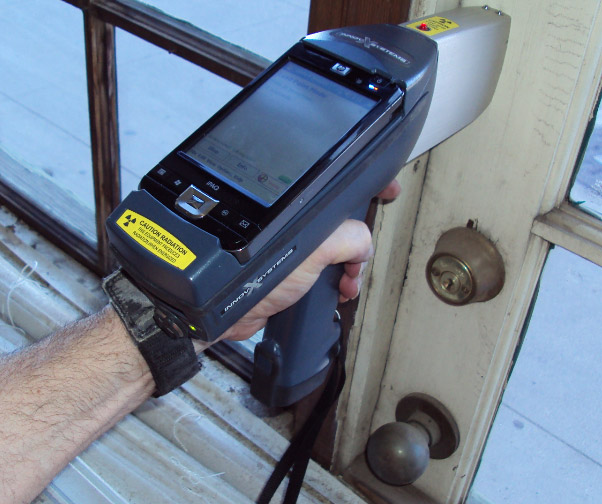Trusted Lead Paint Removal Company-- NYC's Premier Lead Reduction Service
Trusted Lead Paint Removal Company-- NYC's Premier Lead Reduction Service
Blog Article
Comprehensive Overview on Effective Lead Infraction Removal Methods
In the realm of ecological security, attending to lead infractions requires a precise and structured approach. This comprehensive overview starts by highlighting the critical initial actions of identifying lead risks with innovative analysis and screening approaches. Methods such as XRF analysis and dust clean sampling are crucial in identifying contamination sources. Additionally, the overview specifies on the importance of sticking to rigorous safety and security methods during the removal procedure, including using correct PPE and separating affected locations (Lead Paint Removal Company). The succeeding areas guarantee to talk about post-removal confirmation and preventative approaches, making certain lasting safety and compliance. Discover the complex details that make these strategies not simply efficient yet important.
Recognizing Lead Threats
Determining lead threats is a critical initial action in minimizing the threats linked with lead exposure. Lead, a poisonous metal, can be existing in numerous ecological tools, consisting of paint, soil, water, and dirt.
The initial stage in identifying lead risks entails understanding common lead resources within the built atmosphere. Structures constructed prior to 1978 are especially prone because of the common use of lead-based paint during that duration. In addition, dirt contamination can happen from degrading exterior paint, industrial discharges, or historic use leaded gas.
One more substantial resource is lead piping and pipes components, which can seep lead into alcohol consumption water. Durable goods such as playthings, porcelains, and imported products might additionally consist of harmful lead degrees. Significantly, job-related atmospheres and hobbies entailing lead can track impurities into homes.
Assessment and Testing
When resolving lead threats, efficient assessment and screening are vital. This vital step ensures the identification and metrology of lead existence, consequently assisting subsequent remediation efforts. First analysis typically includes an aesthetic examination to determine possible lead sources, such as deteriorating paint or polluted dust. This is complemented by even more rigorous testing methodologies to ascertain the extent of contamination.

Dirt clean tasting is another vital strategy, particularly in domestic setups. By accumulating samples from floorings, windowsills, and various other surface areas, this method offers insights into potential direct exposure risks. Additionally, dirt screening around structure perimeters is important to discover lead contamination that could posture hazards, specifically to kids.
Safe Removal Treatments
Upon completing comprehensive evaluation and screening, executing secure removal treatments is the next essential phase in resolving lead risks. This process guarantees that lead-contaminated materials are properly and safely eradicated, lessening risk to both employees and his explanation citizens. The initial action entails separating the afflicted location utilizing plastic sheet and correct sealing strategies to avoid the spread of lead dust.
Employees must wear ideal individual safety equipment (PPE), including respirators, Bonuses gloves, and disposable coveralls, to alleviate direct exposure. Employing specialized tools and damp approaches, such as wet fining sand or using HEPA-filtered vacuum cleaners, lowers the diffusion of lead fragments. It is essential to stay clear of dry sanding or rough blowing up, as these techniques can generate harmful lead dust.
Waste disposal is another essential part; all polluted materials should be firmly gotten and labeled according to EPA and regional regulations. Furthermore, complete cleaning of the workplace with HEPA vacuum cleaners and damp cleaning makes certain the elimination of residual lead fragments.
Post-Removal Verification

Verification of effective lead removal, referred to as post-removal verification, is vital to guarantee the safety and habitability of the remediated location. This procedure includes a series of careful assessments and tests developed to identify any kind of recurring lead particles that may position health and wellness dangers. The initial step typically includes a visual examination to analyze the conclusion and top quality of the removal job. This assessment guarantees that all recognized sources of lead have been addressed and that no visible indicators of contamination remain.
Adhering to the visual evaluation, ecological tasting is conducted. This involves collecting dirt, soil, and occasionally water samples from the remediated area. Approved labs analyze these samples to gauge lead levels, ensuring they drop listed below the safety limits established by regulative bodies such as the Epa (EPA)
Additionally, air top quality testing may be executed to find airborne lead fragments, especially in look at these guys cases where substantial lead-based paint elimination or improvement has actually happened. The results of these examinations offer quantitative information validating that the lead degrees are within permitted limits.
Inevitably, post-removal confirmation offers as a crucial checkpoint, confirming the efficiency of the lead reduction efforts and guarding the wellness of occupants and site visitors.
Preventive Steps and Upkeep

An essential safety net consists of using lead-safe licensed contractors for any kind of remodelling, repair work, or painting tasks. These experts are learnt techniques that minimize lead dirt and particles. Furthermore, maintaining painted surface areas to prevent cracking or peeling off is important, as weakening paint can release lead fragments into the setting.
Educational efforts targeting property proprietors and lessees concerning the dangers of lead and the value of reporting any type of potential risks can better boost preventative initiatives. Regular cleaning using HEPA vacuums and wet wiping strategies can significantly reduce lead dust accumulation.
Verdict
In summary, reliable lead infraction elimination requires a careful strategy encompassing thorough analysis, specific testing, and rigorous elimination treatments. Continuous inspections and maintenance are necessary to minimize future lead hazards, therefore protecting public health and ensuring sustained compliance with regulative demands.
Report this page